

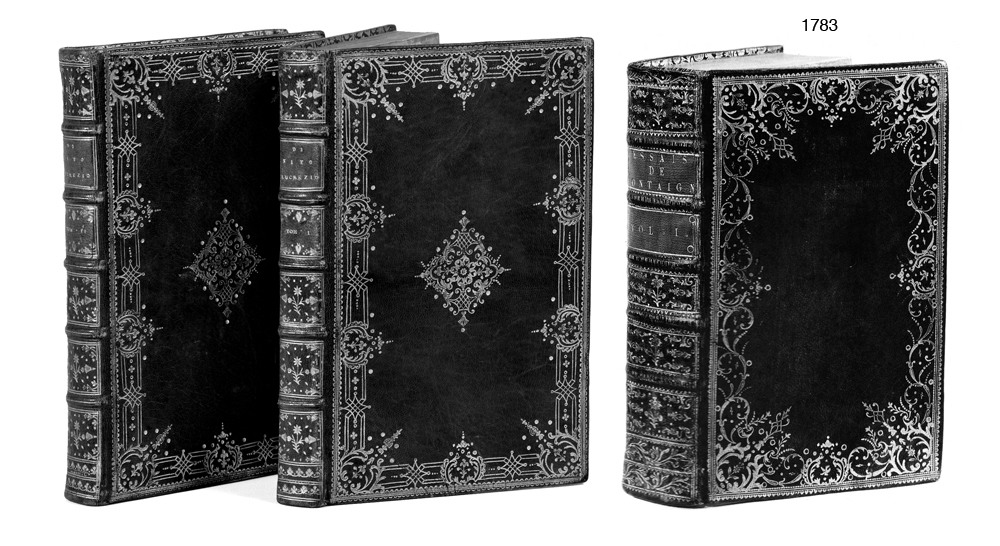
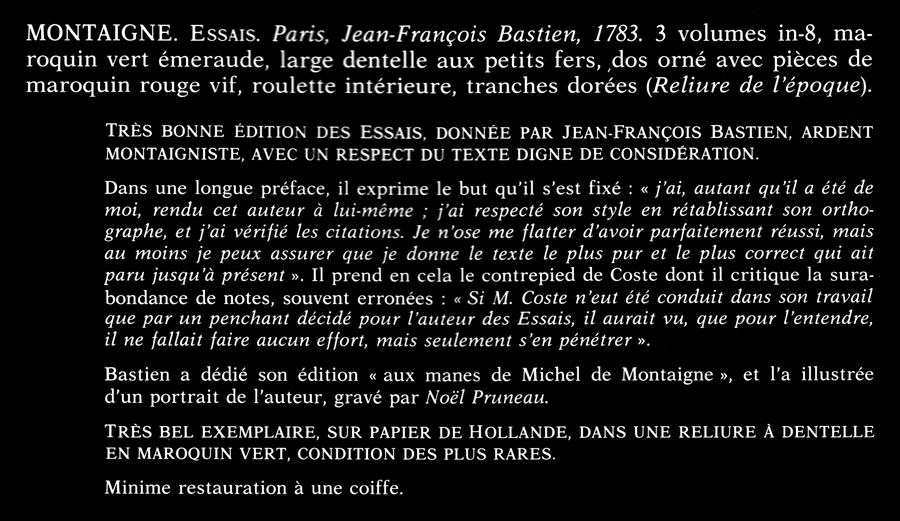
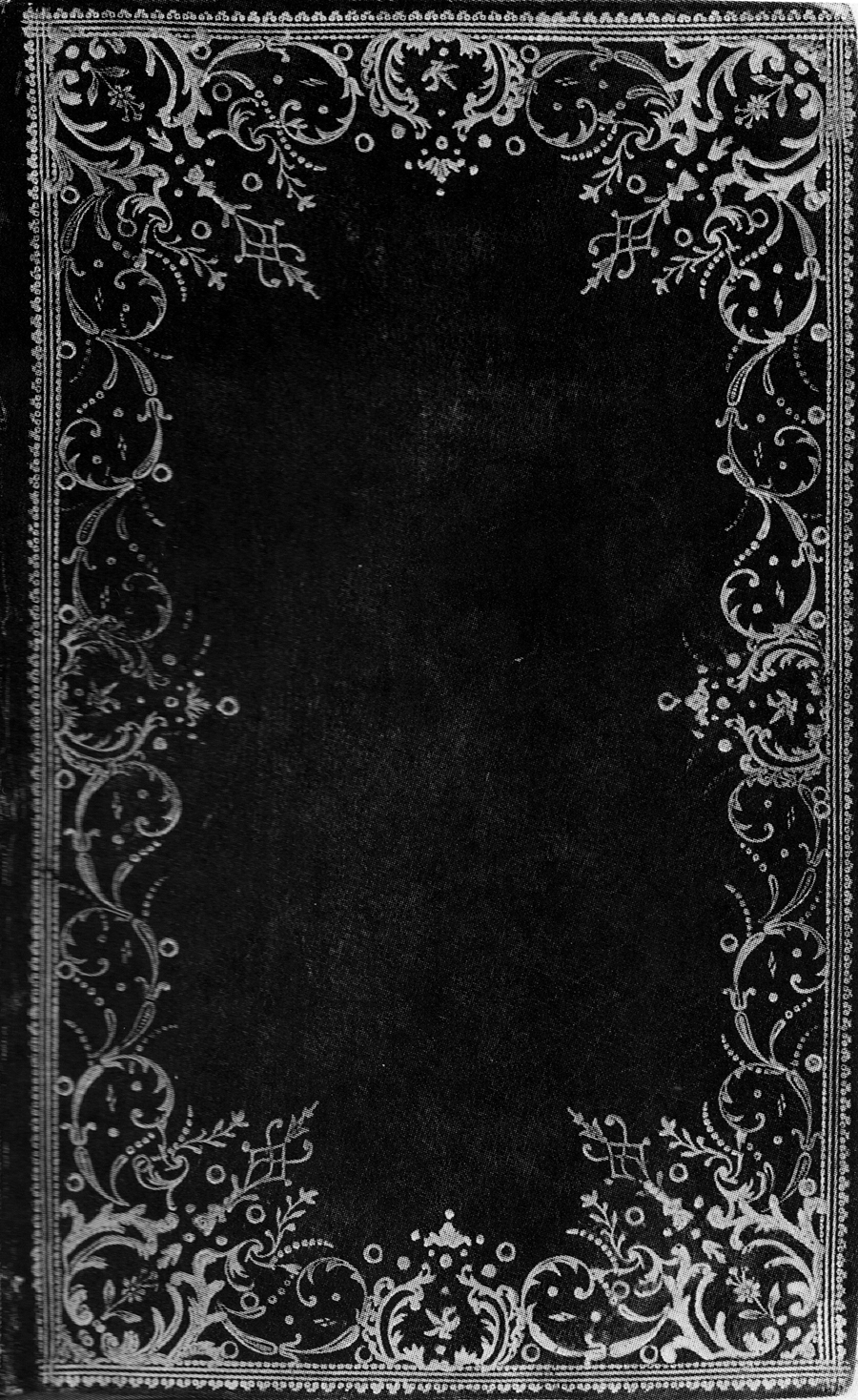
| We see on this 1783 binding, imprints that have appeared in a number of Douceur bindings as was also the case with the Plumet example, specifically however these bindings share corner imprints and design. One would be tempted to think that they were made by the same binder and date to a similar time frame i.e. more than a decade after the death of Louis Douceur. According to the Bibliotheque Nationale de France we learn this about the history of Louis Douceur... |
|
Louis Douceur, probablement le fils du relieur François Douceur, est reçu maître le 14 octobre 1721 et exerce les fonctions de garde de la communauté du 11 septembre 1737 au 10 juin 1739. Il est connu pour la réalisation de reliures à décor à la dentelle portant (ou non) son étiquette, et tout particulièrement celles exécutées sur les exemplaires de luxe des Fables de La Fontaine publiées de 1755 à 1759, illustrées d'après les dessins de Jean-Baptiste Oudry, pour lesquels des fers animaliers furent spécialement gravés (plus d'une trentaine pour huit reliures recensées) ; seules deux de ces reliures parlantes portent l'étiquette de Douceur, dont l'exemplaire décrit ci-dessous. Louis Douceur fit également graver des fers parlants destinés à orner les reliures de luxueux exemplaires des Amours pastorales de Daphnis et Chloé de Longus (1745)(trois agneaux) et de l'Éloge de la Folie d'Erasme (1751)(tête de fou). Le recensement des reliures sorties de son atelier indique que Louis Douceur possédait un très important stock de fers et qu'il comptait parmi ses clients Madame de Pompadour. Il a aussi exécuté quelques reliures à décor mosaïqué. Il se retire en 1766 au profit de son gendre Nicolas II Le Tellier. Louis Douceur, probably the son of the bookbinder François Douceur, is received his papers as a binder on October 14, 1721 and served as guard of the community from September 11, 1737 to June 10, 1739. He is known for the realization of bindings with dentelles, and especially those executed on the luxury copies of the Fables of La Fontaine published from 1755 to 1759, illustrated according to the drawings of Jean-Baptiste Oudry. for which special tools were engraved of various animals (about 30 for eight identified bindings); in only two of these bindings do we find the ticket of Douceur, a copy of which can be seen on this page. Louis Douceur also had specialy engraved tools made to adorn the bindings of luxurious copies of the Pastoral Loves of Daphnis and Chloe de Longus (1745) (three lambs) and the Praise of the Madness of Erasmus (1751) (crazy head ). An inventory of the bindings made in his workshop indicate that Louis Douceur possessed a very important stock of guilding tools and that he counted among his customers Madame de Pompadour. He also made some bindings with mosaic decorations. He retired in 1766 for the benefit of his son-in-law Nicolas II Le Tellier. |
| Thus we learn that he turned over his job to his son-in-law Nicolas II Le Tellier in 1766 and is said to have died in 1769, we need to look further thn the BnF to find out about Tellier. In the work of Léon Gruel; Manuel historique et bibliographique de l'amateur de reliures, Paris1887) we find a lot of information. (pages 127-129) shown below as one page. From this we know that Tellier would have produced post Douceur bindings. There is no mention anywhere of a Plumet |
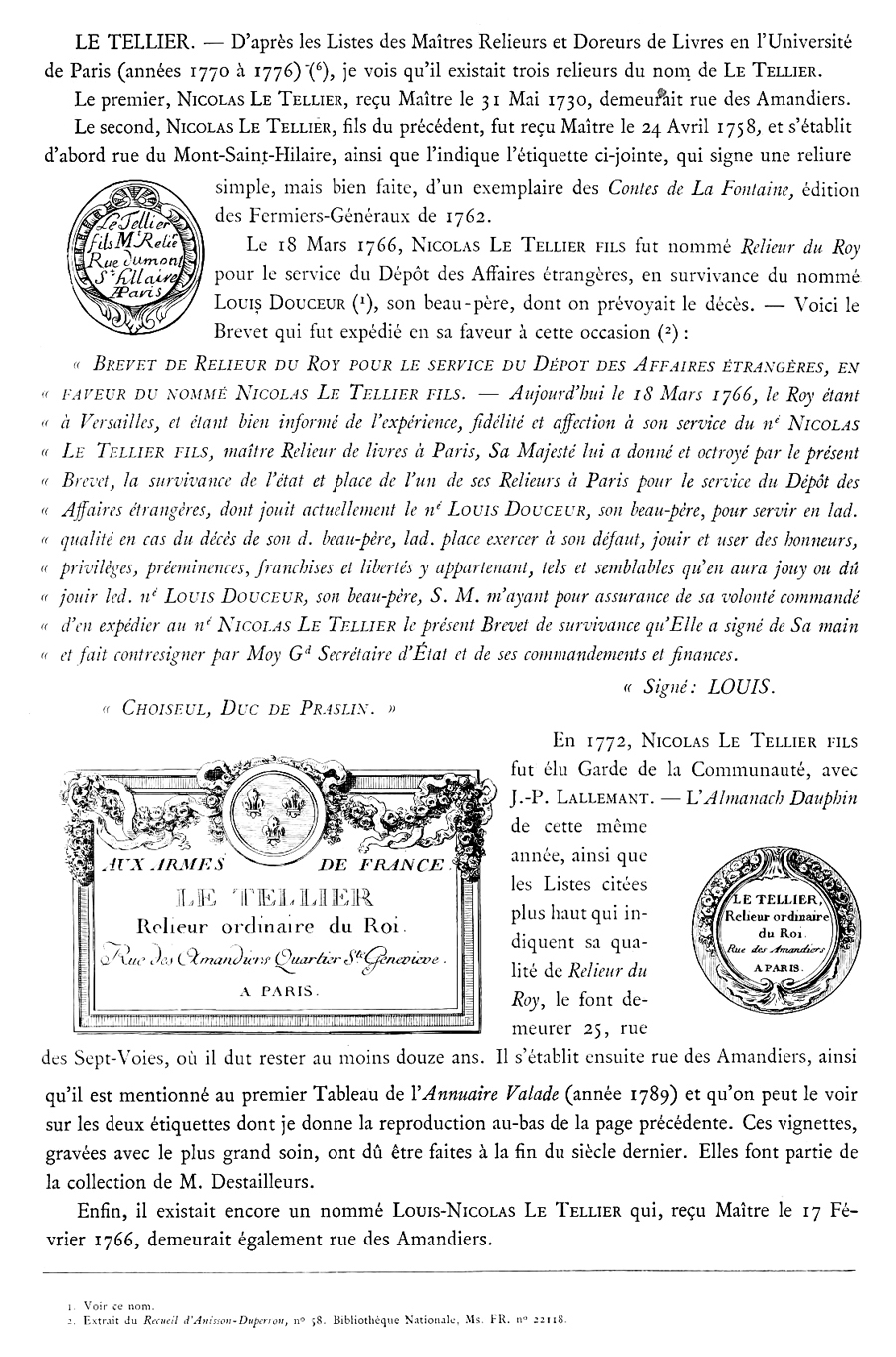
| I show below another binding that shares this corner tool, here we see a wide range of Douceur tools. I have no idea if this is a post douceur binding, it is on however the same Henault edition as No 97 on the previous page that, and dates to at least 1761. There are some tools I have not seen on any other Douceur binding, a wonderfully complex dentelle a true marvel that was sold in an Alde auction in 2009 for 29.000 euros that's about 40 thousand in todays money. |
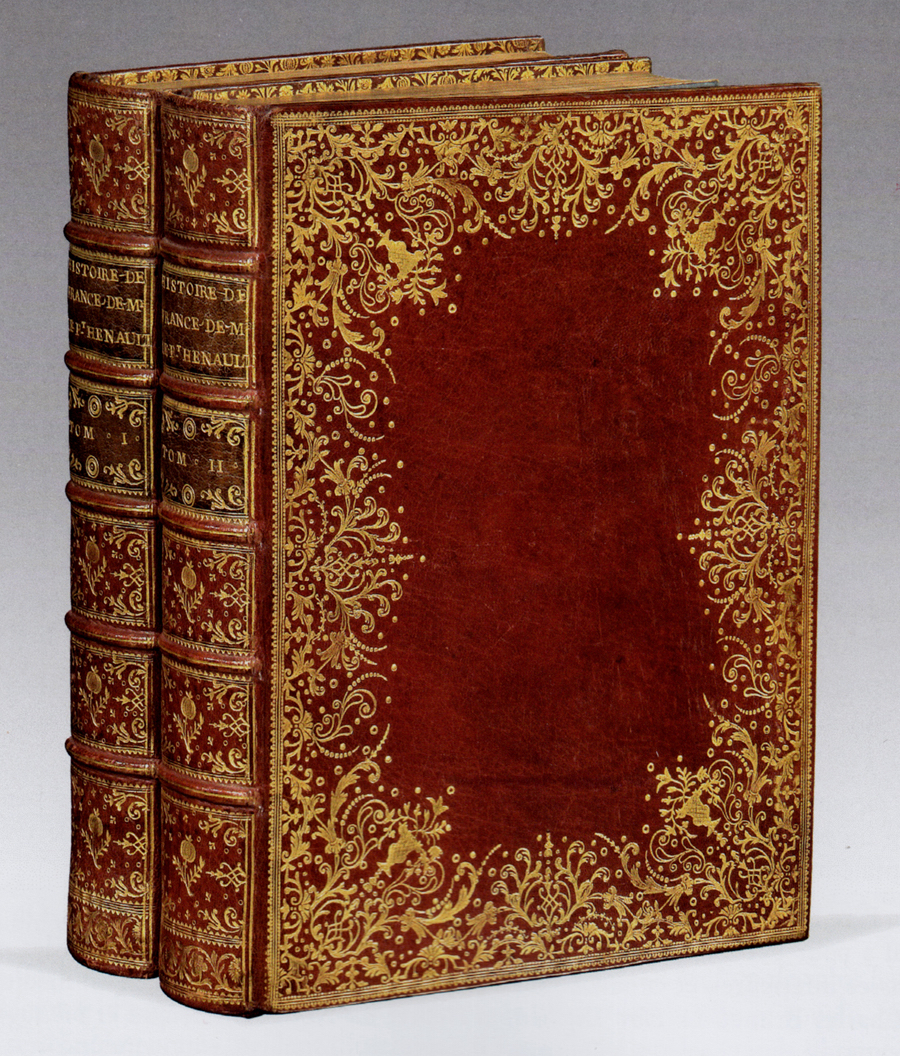
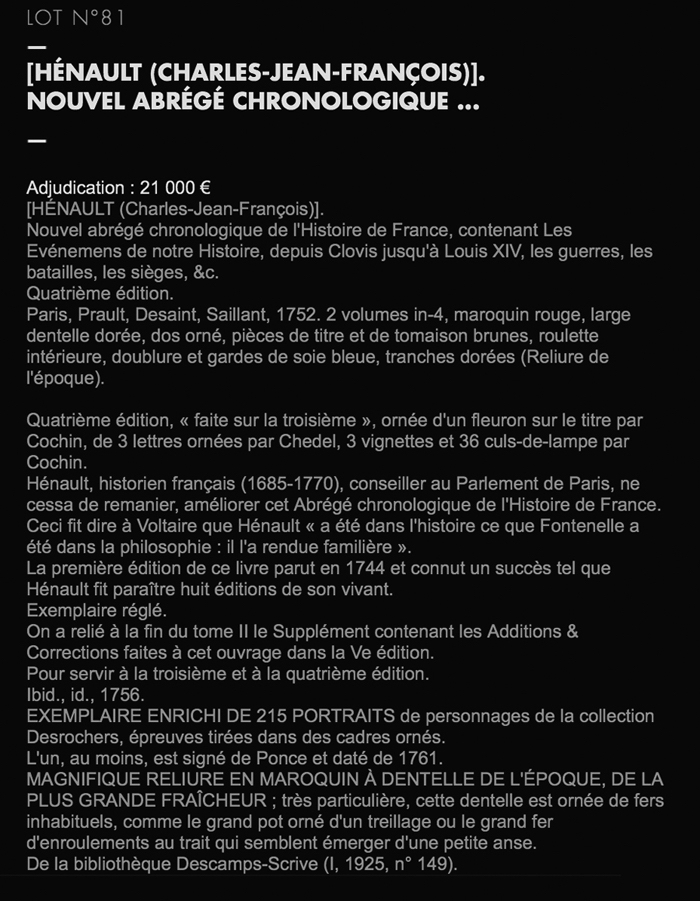
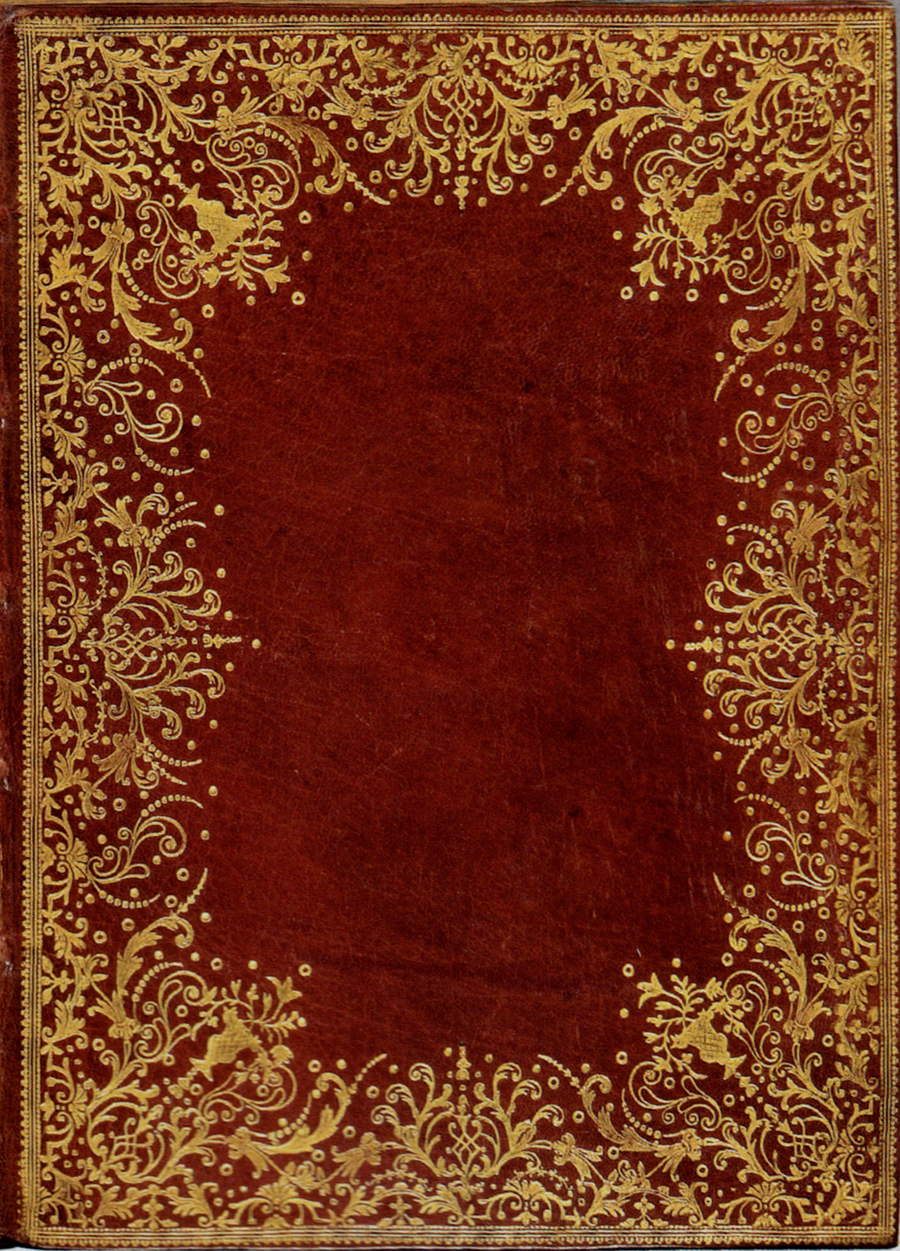
| I will need more time to catalogue these tools however I want to show you another great discovery in the Sotheby's online catalogues, shown below this small binding, enlarges to 600 dpi on the auction page (click here to see it) |
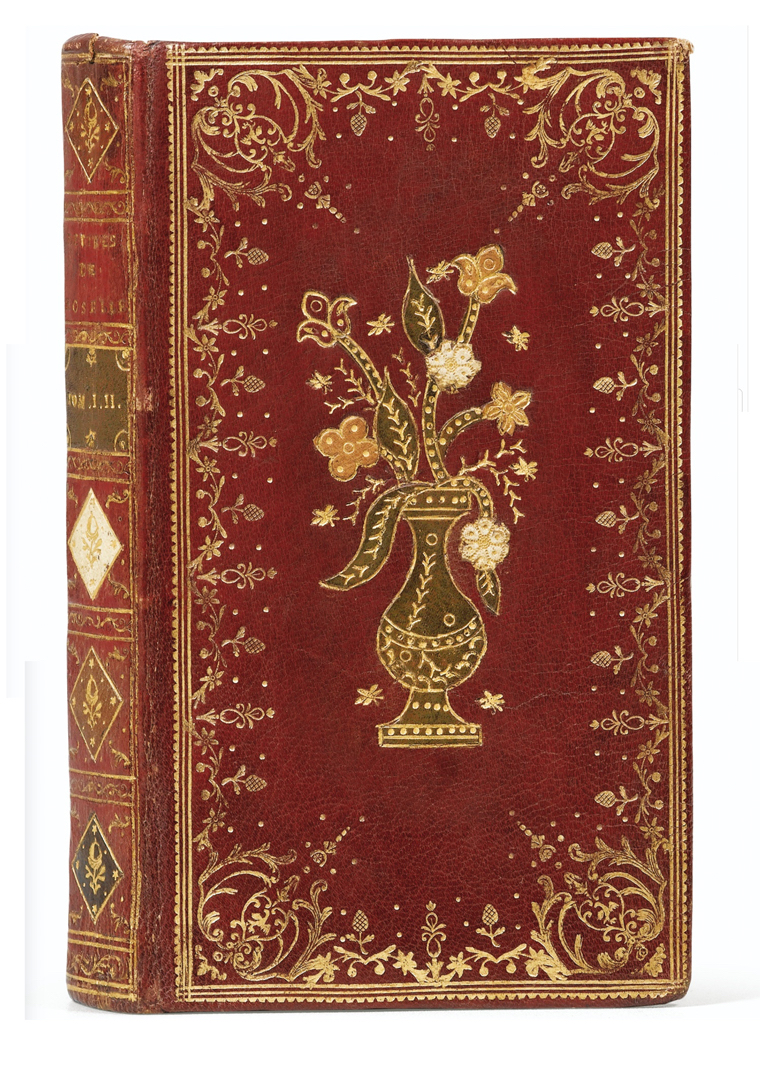
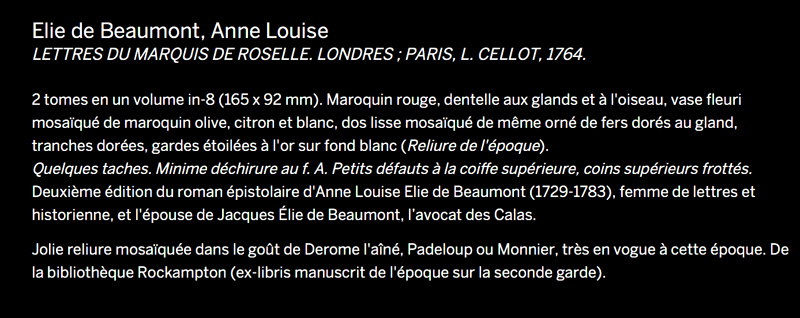
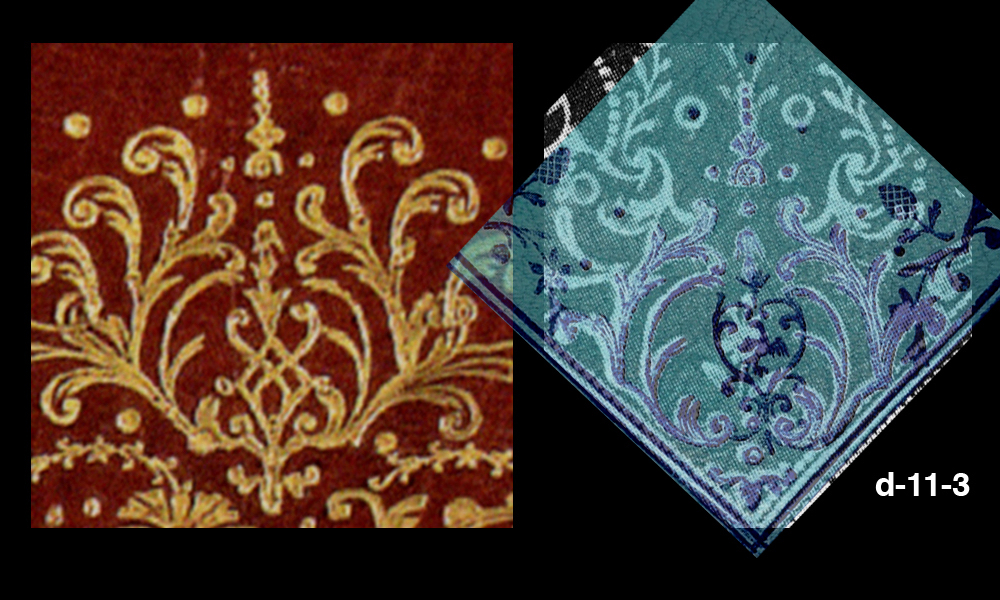
| In Comparative Diagram 2, the corner tool that is found in all these bindings, d-11-3, is shown with an overlay of the corner imprint from this small Beaumont binding, which is very clear, we can see for the first time the actual fine details of it (shown inverted as blue). This means that this is also a Douceur, or a post douceur, the tools are very interesting. This binding must be 1764 or later, very near to the end of Douceur's career or even later as up to now, I have never seen a fer à l'oiseau in Douceur's bindings, while some the other tools seem to appear in the later bindings. |
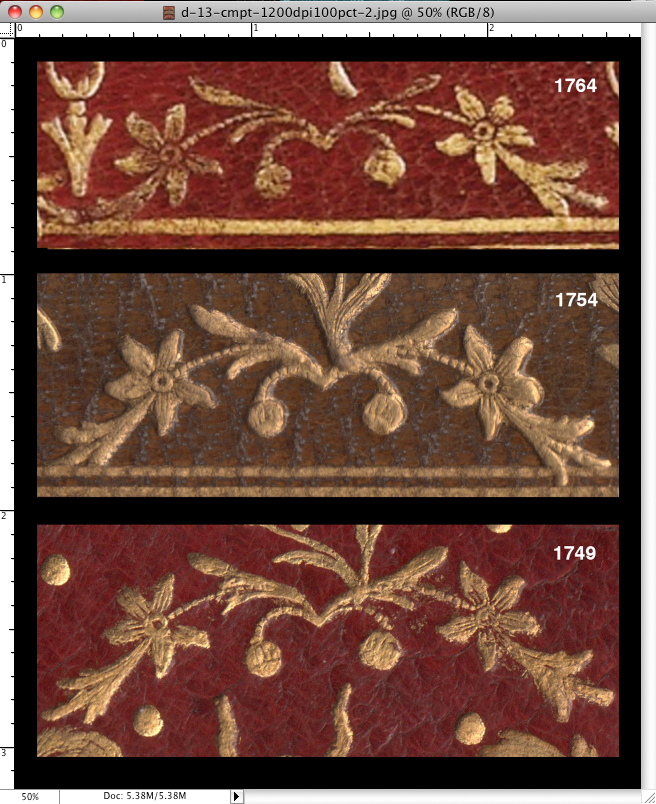
| In Comparative Diagram 3, I show that the Louis Douceur imprint d-13 is present in this 1764 example, the same tool, however perhaps not employed by the same person |
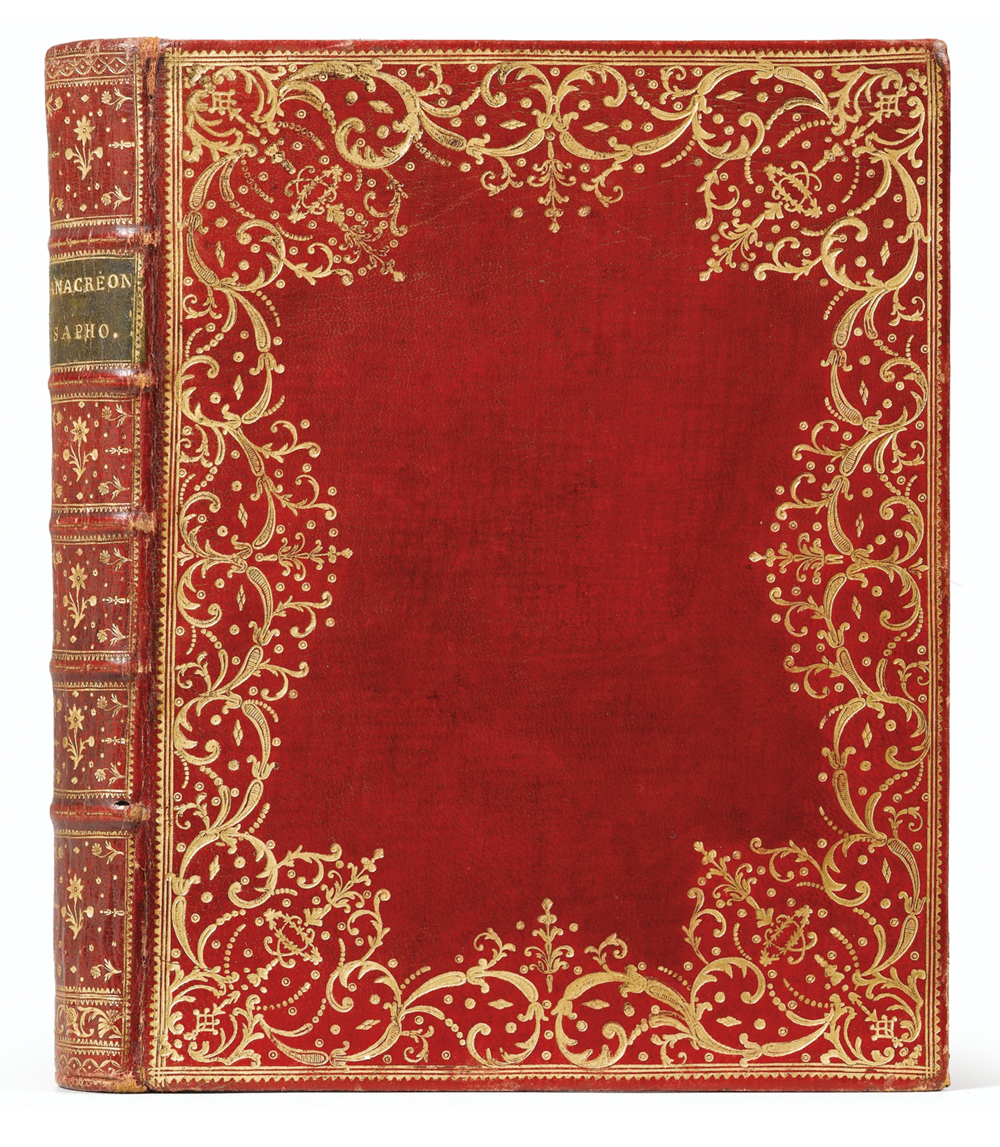
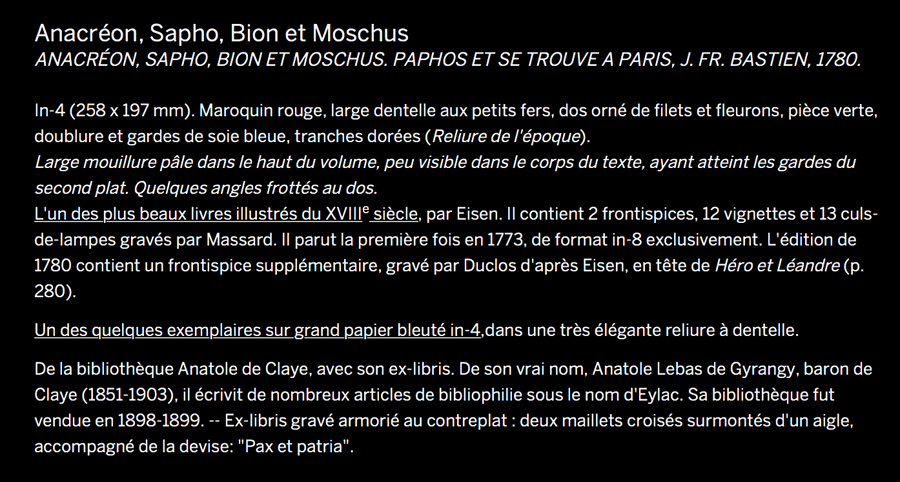
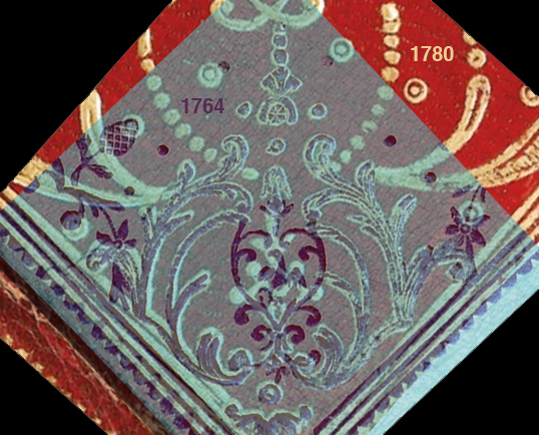
| In Comparative Diagram 4, we show that the corner imprint of the 1780 binding is the same as that of 1764 which is the same as the Douceur d-11-3, this is the same imprint from the same tool. We see in this 1780 binding some distictive non Douceur imprints that look to be the same ones that can be seen in the 1784 binding at the top of this page... post Douceur work! We may not know which bindings Douceur actually made, such as the case of the 1761 examples, however the d-11-3 corner tool is a certain link to post Douceur work. |
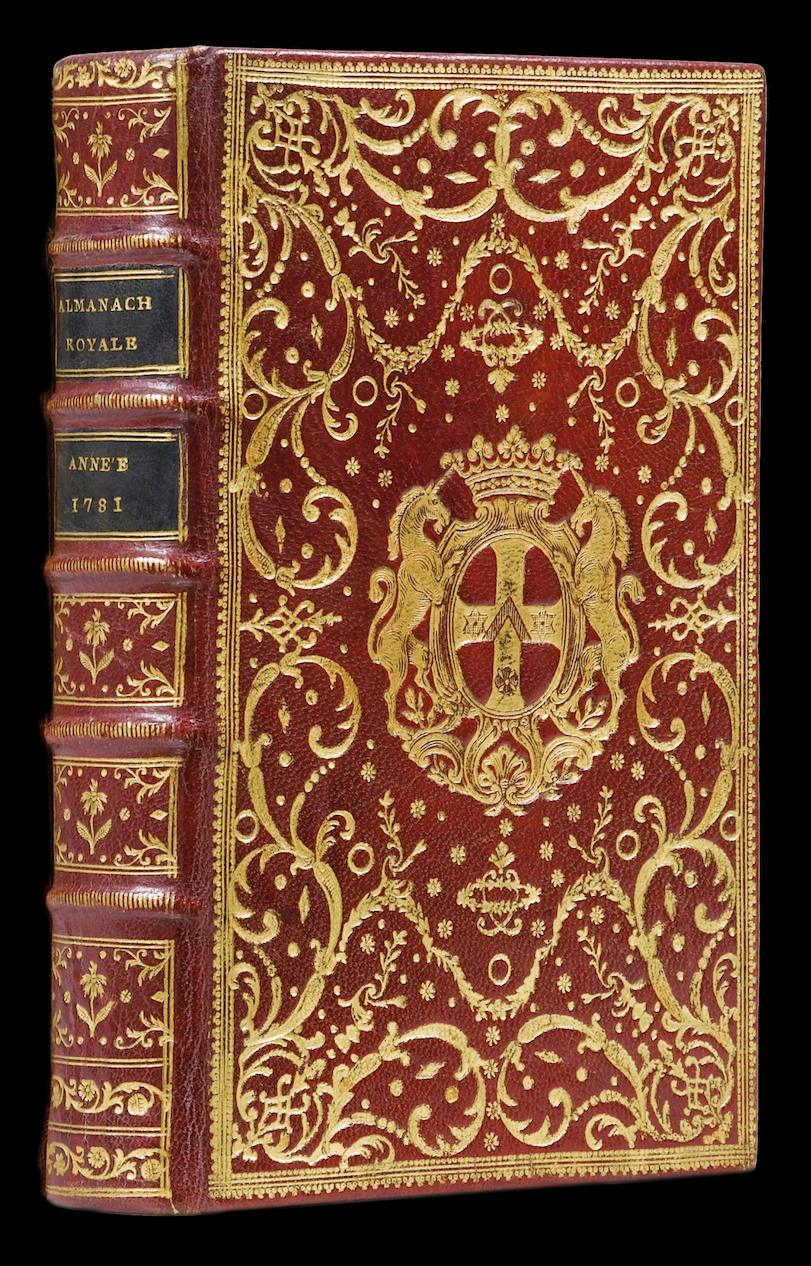
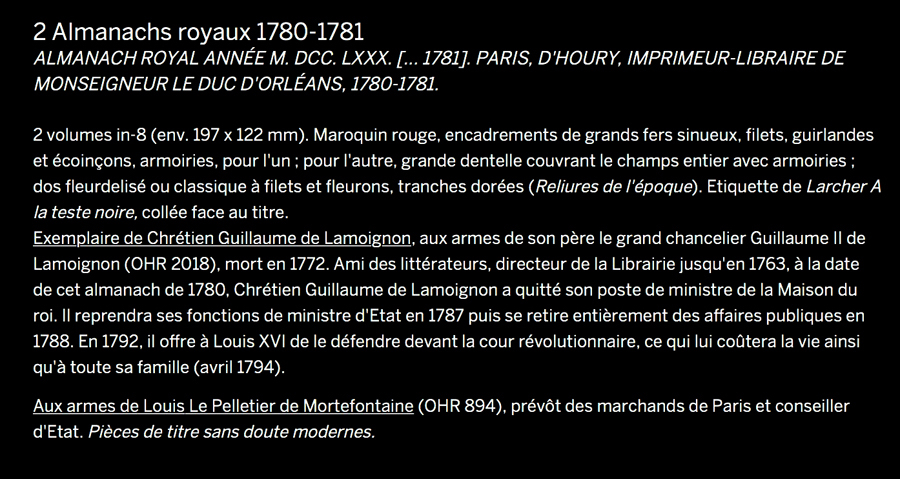
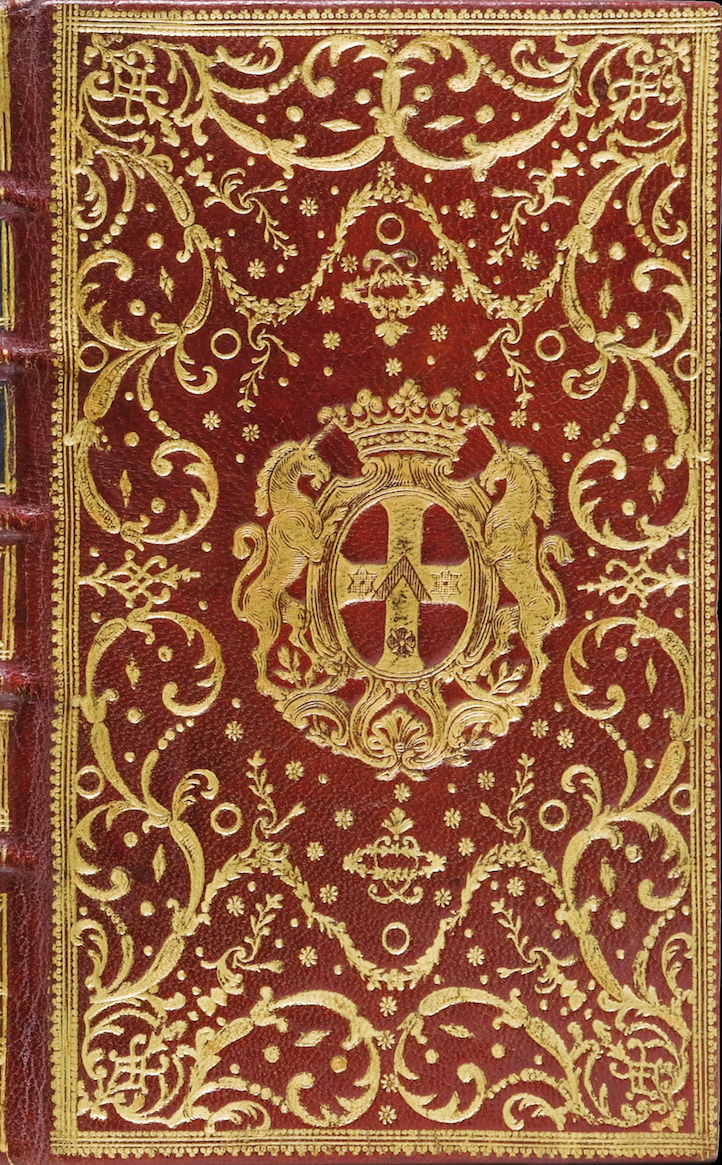
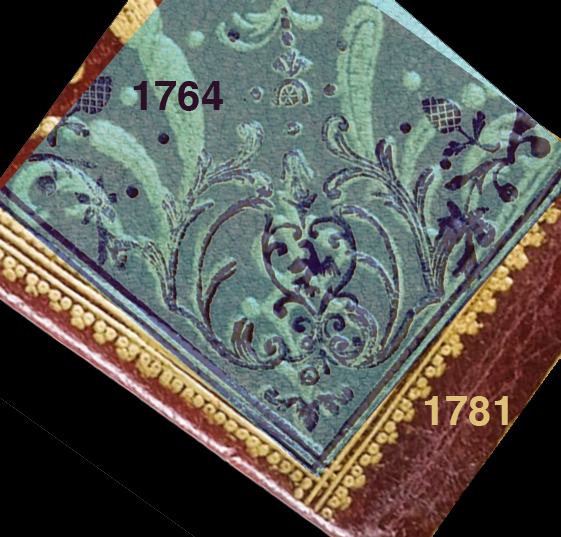
| I have found another of these post Douceur bindings in the unlikely form of a 1781 Almanach Royal. This binding is very likely to have been made in 1781 and gives us a bit of perspective on the other two examples. The auction details shown beneath the Almanch is for two Almanach but I only show one as the other was different and I did not want to mix bindings on this page. From the overlay image in Comparative Diagram 5, we see that the corner tool is indeed like all the others, even though I had to distort the board somewhat to show it in the correct width, the overlay is still very close, click on the image to see the enlargement. Below I show the three examples with identical corner imprint as well many shared imprints, these bindings are a mixture of Douceur tools and non Douceur tools... I need to find some bindings from the mid 1770's. |
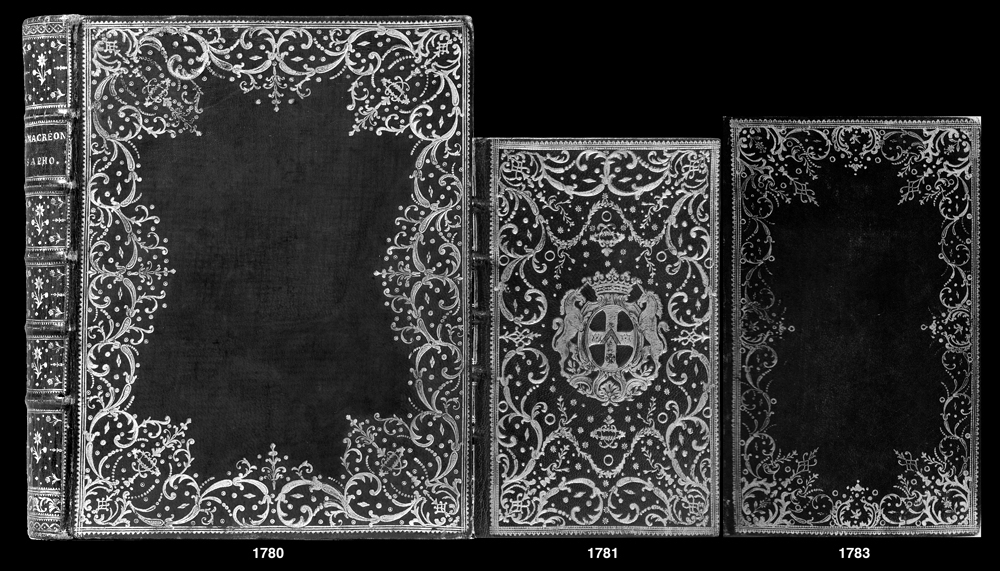
|
click here to return to the INDEX of new (2017) pages. click here to return to the HOME page. see below links to previous work |
| Even experts are sometimes wrong, before you spend thousands on a book, please do your own research! Just because I say a certain binding can be attributed to le Maitre isn't any kind of guarantee, don't take my word for it, go a step further and get your own proof. In these pages I have provided you with a way of doing just that. |
| Virtual Bookings, created by L. A. Miller | return to the Home page of VIRTUAL BOOKBINDINGS |